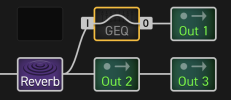sick pickle
Inspired
Hey friends,
I auditioned for a band the other night using Justin York's GOT preset. This has 4 main amp tones - high gain, crunch, dirty fender, AC 30. It worked well for the most part! I dialled in some Lo/Hi cuts in the preamp and adjusted for the room when using my Line 6 L3M FRFR. However, I ran into some 'design' thoughts when playing. Each song usually called for a specific amp sound (picked from those listed above). But I had not dialled in any solo boosts - my solos were totally lost in the band mix while playing.
That being said....how to approach this? If I am on the AC30 sound, I want to dial in a lead tone specific to that amp for that song, and the same for the others. I can do this via scenes, but that would be the 8 scenes:
1. High Gain
2. High Gain Lead
3. Crunch
4. Crunch Lead
5. Dirty Fender
6. Dirty Fender Lead
7. AC30
8. AC30 Lead
That basically fills the entire preset. I can then use conventional methods for solo boosts - scene level, or EQ jumps, etc..
The other option may be, create 4 separate presets for the 4 main amp sounds and then open up much more possibility in each preset with more scene options, etc.
Any thoughts or insights would be appreciated!
I auditioned for a band the other night using Justin York's GOT preset. This has 4 main amp tones - high gain, crunch, dirty fender, AC 30. It worked well for the most part! I dialled in some Lo/Hi cuts in the preamp and adjusted for the room when using my Line 6 L3M FRFR. However, I ran into some 'design' thoughts when playing. Each song usually called for a specific amp sound (picked from those listed above). But I had not dialled in any solo boosts - my solos were totally lost in the band mix while playing.
That being said....how to approach this? If I am on the AC30 sound, I want to dial in a lead tone specific to that amp for that song, and the same for the others. I can do this via scenes, but that would be the 8 scenes:
1. High Gain
2. High Gain Lead
3. Crunch
4. Crunch Lead
5. Dirty Fender
6. Dirty Fender Lead
7. AC30
8. AC30 Lead
That basically fills the entire preset. I can then use conventional methods for solo boosts - scene level, or EQ jumps, etc..
The other option may be, create 4 separate presets for the 4 main amp sounds and then open up much more possibility in each preset with more scene options, etc.
Any thoughts or insights would be appreciated!



